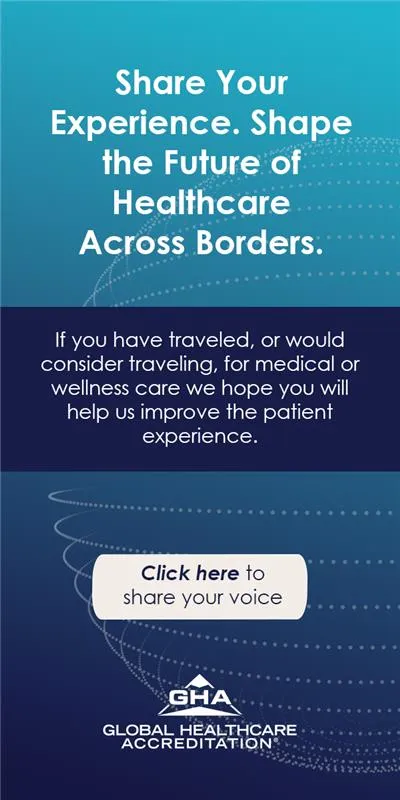As healthcare shifts from reactive to proactive, early detection packages have become vital tools in identifying diseases at their nascent stage—often before symptoms emerge. These packages combine advanced diagnostics and screening protocols, tailored to catch hidden threats ranging from cancer and cardiovascular disease to metabolic and neurological disorders.
But what’s the science behind these health screening bundles? This article breaks down the mechanisms, technologies, and scientific rationale that make early detection packages a cornerstone of modern preventive medicine—especially in the context of global medical tourism.
Understanding Early Detection: The Biological Basis
Early detection is rooted in the understanding that diseases follow a biological progression—a timeline where cellular changes occur long before clinical symptoms manifest. The objective is to intercept these processes at a reversible or more manageable stage.
The "Preclinical Phase"
Many chronic conditions—such as diabetes, cancer, and heart disease—have a preclinical phase where biomarkers or structural anomalies can already be detected using advanced diagnostics. For example:
- Cancer often begins with DNA mutations or abnormal cell growth.
- Atherosclerosis starts as minor plaque buildup before it causes arterial blockage.
- Neurodegenerative diseases like Alzheimer’s show metabolic and protein changes years before cognitive symptoms arise.
This scientific understanding allows physicians to develop screening strategies based on predictive risk rather than just symptomatic complaints.
Key Technologies Powering Early Detection Packages
1. Medical Imaging Modalities
Modern imaging plays a crucial role in revealing structural or functional abnormalities. Techniques include:
- Low-dose CT scans to identify early lung nodules in smokers.
- Mammography to detect breast tissue abnormalities.
- Ultrasound and MRI for organ screening and soft tissue evaluation.
- Coronary calcium scoring to assess cardiovascular risk.
These imaging tools can uncover disease processes that would otherwise remain hidden in routine physical exams.
2. Blood-Based Biomarker Testing
Blood tests are the workhorses of early detection packages. These include:
- Tumor markers like PSA (prostate), CA-125 (ovarian), or AFP (liver).
- Inflammatory markers such as CRP and ESR.
- Hormonal panels to evaluate endocrine functions.
- Lipid profiles and blood glucose levels to assess metabolic health.
These biomarkers are anchored in biochemistry and molecular biology, serving as measurable indicators of pathological changes.
3. Genetic and Genomic Screening
The rise of genomic medicine has introduced DNA-based screening for:
- Hereditary cancer syndromes (e.g., BRCA1/2 mutations).
- Predispositions to heart disease, diabetes, and Alzheimer’s.
- Pharmacogenomics to identify how an individual may respond to certain medications.
These genetic insights provide a layer of predictive risk assessment far beyond conventional screening.
4. Functional Diagnostics
Some early detection packages include functional tests that assess the performance of organ systems:
- Spirometry for early signs of COPD or asthma.
- Stress ECG or treadmill tests for cardiovascular endurance and ischemia detection.
- Cognitive screening for early-stage dementia.
These tests combine physiology and clinical neurology to provide insights into subtle impairments.
How Data Science Enhances Early Detection
Modern early detection packages are increasingly data-driven. With the help of artificial intelligence and predictive analytics, risk factors from multiple domains (age, genetics, lifestyle, biomarkers, imaging) are integrated to generate personalized risk scores.
These tools allow:
- Identification of high-risk patients who may otherwise be overlooked.
- Pattern recognition in imaging and laboratory data.
- Continuous tracking for those enrolled in longitudinal monitoring programs.
The combination of clinical data with machine learning algorithms marks a significant leap in precision preventive medicine.
Global Relevance: Why Early Detection Packages Matter in Medical Tourism
As patients travel across borders for health optimization, early detection packages are a primary driver of medical tourism. Here's why:
- Comprehensive and consolidated testing: Packages abroad often offer faster, all-in-one evaluations that may take months to access domestically.
- Advanced technologies at reduced costs: Many international hospitals invest in cutting-edge diagnostic platforms while maintaining lower operational expenses.
- Preventive care focus: High-net-worth individuals and corporate clients seek proactive solutions, not just treatment-based care.
- Customization and personalization: Packages abroad frequently include region-specific and ethnicity-relevant risk screenings.
For industry professionals, promoting these packages is more than marketing—it's about showcasing access to evidence-based, science-backed health optimization.
Benefits of Early Detection from a Scientific and Clinical Standpoint
1. Improved Prognosis
Detecting diseases early dramatically improves survival rates, particularly in cancers like breast, colorectal, and prostate.
2. Lower Treatment Burdens
Intervening early often means less aggressive and less expensive treatments, reducing patient risk and system costs.
3. Chronic Disease Prevention
With timely lifestyle changes guided by early markers (e.g., prediabetes, elevated cholesterol), many conditions can be prevented altogether.
4. Reduced Morbidity
Early treatment of silent conditions like hypertension or osteoporosis helps avoid complications such as stroke or fractures.
Challenges and Ethical Considerations
While early detection packages are based on sound science, they are not without challenges:
- False positives can lead to unnecessary anxiety and procedures.
- Overdiagnosis may uncover abnormalities that would never progress to harm (e.g., some thyroid nodules).
- Privacy concerns around genetic testing and data storage.
- Access disparity as not all populations can afford or access these advanced tools.
Ethically, providers and facilitators must ensure that early detection aligns with medical necessity, not just market appeal.
Choosing the Right Package: A Science-Informed Decision
Professionals in medical tourism must guide clients toward evidence-based early detection packages. Best practices include:
- Ensuring the inclusion of age-appropriate and risk-adjusted tests.
- Validating the use of accredited and certified technologies.
- Confirming the availability of follow-up services and medical counseling.
- Educating patients on benefits, limitations, and implications of results.
The goal is to empower patients with actionable knowledge, not just bombard them with data.
Science as the Backbone of Preventive Health
In conclusion, The science behind early detection packages is robust, blending innovations in molecular biology, imaging, genetics, and AI. These tools not only detect diseases early but redefine how we think about health—as something to be preserved, not just restored.
For the medical tourism industry, understanding and communicating this science is essential to designing trustworthy, value-driven screening experiences that are both clinically valid and globally competitive.
If you're considering this treatment, Better by MTA is here to help. Through our exclusive partnership with Mastercard, we connect you to trusted hospitals and doctors worldwide, ensuring price transparency and secure, flexible payment options. Whether you're looking to use a credit card, bank transfer, or explore upcoming patient financing options, we make your medical journey seamless and worry-free.
Get started today and book confidently without hidden fees or financial risks. Click the link below to request a free quote: https://www.better.medicaltourism.com/get-a-quote













